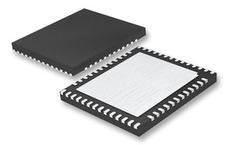The NB100LVEP221 is a low skew 2:1:20 differential driver, designed with clock distribution in mind, accepting two clock sources into an input multiplexer. The two clock inputs are differential ECL/PECL; CLK1/CLK1bar can also receive HSTL signal levels. The LVPECL input signals can be either differential or single-ended (if the VThe LVEP221 specifically guarantees low output-to-output skew. Optimal design, layout, and processing minimize skew within a device and from device to device.To ensure tightest skew, both sides of differential outputs should be terminated identically into 50 ohms even if only one output is being used. If an output pair is unused, both outputs may be left open (unterminated) without affecting skew.The NB100LVEP221, as with most other ECL devices, can be operated from a positive V supply in LVPECL mode. This allows the LVEP221 to be used for high performance clock distribution in +3.3 V or +2.5 V systems. In a PECL environment, series or Thevenin line terminations are typically used as they require no additional power supplies. For more information on PECL terminations, designers should refer to Application Note AND8020/D. pin, an internally generated voltage supply, is available to this device only. For single-ended LVPECL input conditions, the unused differential input is connected to V as a switching reference voltage. V may also rebias AC coupled inputs. When used, decouple V via a 0.01 uF capacitor and limit current sourcing or sinking to 0.5 mA. When not used, VSingle-ended CLK input operation is limited to V >/= 3.0 V in LVPECL mode, or V
●Features
●---
● |
● 15 ps Typical Output-to-Output Skew
● 40 ps Typical Device-to-Device Skew
● Jitter Less than 2 ps RMS
● Maximum Frequency > 1.0 Ghz Typical
● VBB Output
● 540 ps Typical Propagation Delay
● LVPECL and HSTL Mode Operating Range: VCC = 2.375 V to 3.8 V with VEE = 0 V
● NECL Mode Operating Range: VCC = 0 V with VEE = -2.375 V to -3.8 V
● Q Output will Default Low with Inputs Open or at VEE


